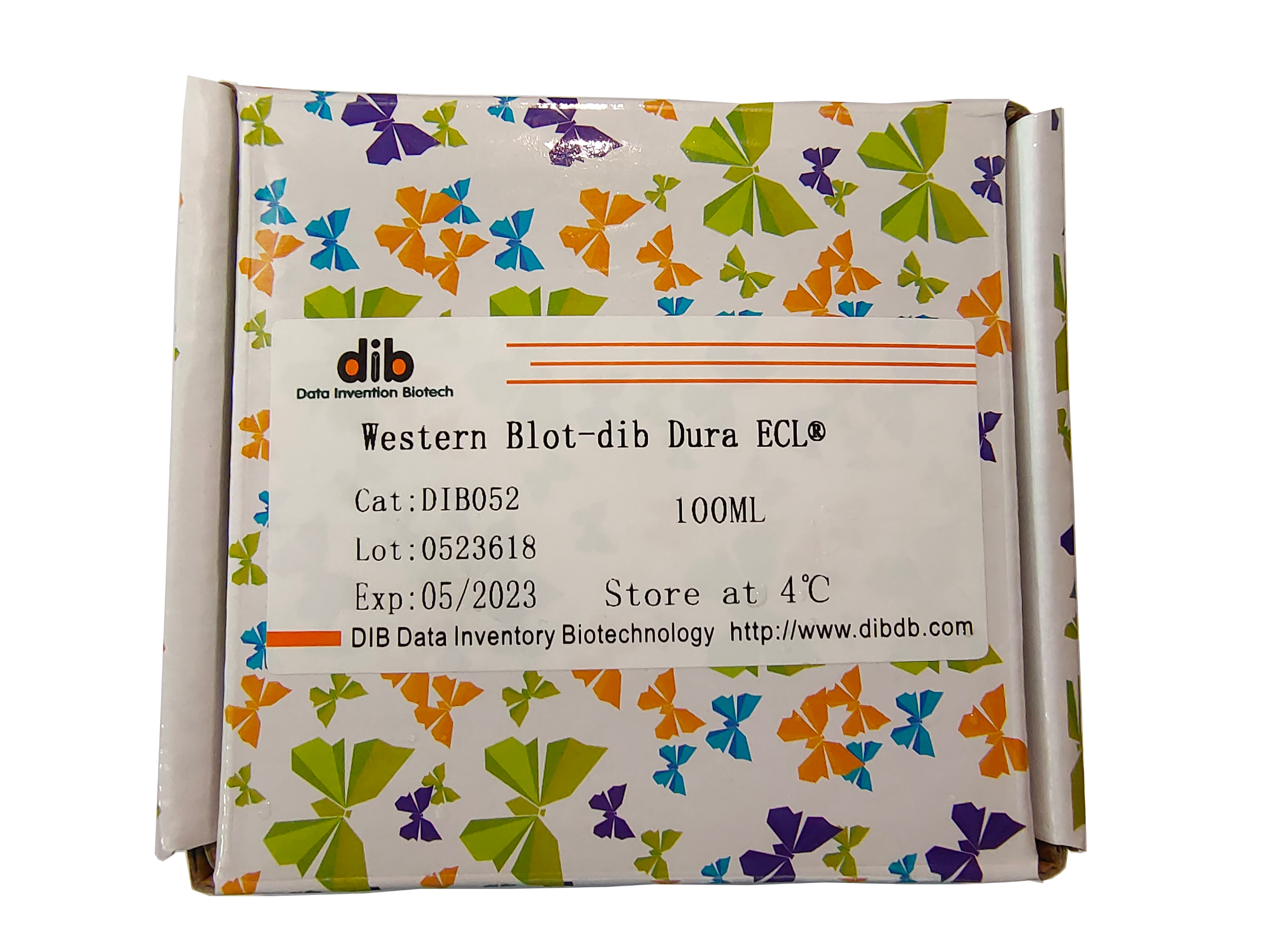Other required materials
l The blotting membrane that has been transferred: Separate the proteins using a suitable electrophoresis method and transfer these proteins to the nitrocellulose membrane.
l Dilution buffer: use Tris or phosphate buffer.
l Washing buffer: add 5mL 10% Tween-20 to 1000mL dilution buffer (the final concentration of Tween-20 will be 0.05%).
l Blocking reagent: add 0.5mL of 10% Tween-20 to 100mL of blocking buffer, and select a blocking buffer that has the same basic components as the dilution buffer.
l Primary antibody: Choose an antibody specific to the target protein.Use dilution buffer to prepare a stock solution of the antibody.Use blocking reagent to dilute the antibody from the stock solution to the antibody working solution.The optimal dilution depends on the primary antibody and the amount of antigen on the membrane.
l HRP-labeled secondary antibody: Choose a HRP-labeled secondary antibody that specifically binds to the secondary antibody, and use the dilution buffer to prepare the antibody storage solution.Use blocking reagent to dilute the antibody from the stock solution to the antibody working solution.The dilution is between 1:100,000 and 1:500,000 or the concentration of the antibody working solution is 2-10ng/ml.This concentration range also applies when using streptavidin-HRP.The optimal dilution of the secondary antibody depends on the HRP-labeled secondary antibody and the amount of antigen on the membrane.
l Film cassettes, developing and fixing reagents for processing radiographic films
l Rotary shaker for incubation.
Detailed steps of Western blotting
1) Take the imprinted membrane out of the protein transfer equipment, add a suitable blocking solution and incubate in the greenhouse for 20-60 minutes while shaking.To block non-specific protein binding sites on the membrane.Please note: it is very important to use the antibody dilution recommended in the previous section.
2) Take the membrane out of the blocking solution and incubate it with the working solution of the primary antibody in the greenhouse for 1 hour while shaking; or incubate overnight at 28°C without shaking.
3) Add enough washing buffer to the membrane to ensure that the buffer completely covers the membrane.Incubate with shaking for ≥5 minutes, change the washing buffer and repeat this step 4-6 times.Increasing the volume of the wash buffer, the number of washes and the washing time help to reduce the background signal.Note: Before incubation, a short rinse of the membrane in the washing buffer will improve the washing efficiency.Please note: It is very important to use the HRP-labeled secondary antibody dilution suggested above.
4) Incubate the HRP-labeled secondary antibody working solution with the membrane in the greenhouse for 1 hour while shaking.
5) Repeat step 3 to remove unbound HRP-labeled secondary antibody.Note: The membrane must be washed thoroughly after incubating with the HRP-labeled secondary antibody.
6) Mix A solution and B solution in equal proportions to prepare a working solution.Use 0.01~0.1ml working solution per cm2 of membrane.The working fluid can be stable for 8 hours in the greenhouse.Note: Heavy rain, sunlight or any other strong light may damage the working fluid. For best results, keep this working fluid in an amber bottle and avoid long-term heavy rain and any strong light.Common lighting in the laboratory will not harm the working fluid.
7) Incubate the imprinted membrane in the working solution for 5 minutes.
8) Take out the imprinting film from the working fluid and place it in a plastic sheet or clean plastic paper (film). Use a piece of absorbent paper to absorb the excess liquid, and carefully press out air bubbles between the imprint and the plastic paper .
9) Place the imprint film wrapped in plastic paper (film) in the film cassette with the protein side facing up, and turn off all lights except the light suitable for film exposure (such as red safety light).Note: The film must be kept dry during exposure. For best results, take the following measures: * Ensure that the excess substrate is completely removed from the film and plastic paper.* During the entire film processing, use gloves.* Do not place the imprint film on the developed film, because the chemicals on the film will weaken the signal.
10) Place the X-ray film on top of the film.It is recommended that the first exposure is 60 seconds.The exposure time can be adjusted later to achieve the best results.The chemiluminescence reaction is strongest during the first 5-30 minutes after the substrate incubation.This reaction can last for several hours, but the intensity will decrease with time. If the substrate is exposed for a longer time after incubation, the exposure time may need to be extended to obtain a stronger signal.If you use phosphorescent storage imaging devices (such as Bio-Rad's molecular imager system) or CCD cameras, longer exposure times may be required.Warning: Any movement between film and film may cause artificial, non-specific signals on the film.
11) Use suitable developer and fixer to develop the film.If the signal is too strong, shorten the exposure time or peel off the imprinting film and reduce the antibody concentration to retest.
Product parameter

